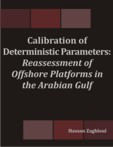Add abstract
Want to add your dissertation abstract to this database? It only takes a minute!
Search abstract
Search for abstracts by subject, author or institution
Want to add your dissertation abstract to this database? It only takes a minute!
Search for abstracts by subject, author or institution
Flow analysis of a four-strand steelmaking tundish using physical and numerical modelling
by Jan Hendrik Cloete
| Institution: | Stellenbosch University |
|---|---|
| Department: | Process Engineering |
| Degree: | MEng |
| Year: | 2014 |
| Keywords: | Process engineering |
| Posted: | |
| Record ID: | 1464906 |
| Full text PDF: | http://hdl.handle.net/10019.1/86686 |
ENGLISH ABSTRACT: In modern steelmaking a tundish serves as an important metallurgical reactor to remove inclusions and maintain thermal and chemical homogeneity in the product. In this study the flow behaviour in a four strand tundish was investigated by means of a 1/2 scale water model, based on Froude number similarity, as well as by using numerical modelling. Both the numerical study and physical model were used to characterise residence time distribution (RTD) in the vessel and to calculate properties pertaining to the tundish flow regime. The three different tundish configurations investigated in this study are: a bare tundish with no flow control devices, a tundish with a turbulence inhibitor and a tundish using a turbulence inhibitor with holes in combination with dams. Preliminary investigations focussed on the framework for obtaining an accurate numerical solution within reasonable computational times. The effect of assuming symmetry and dynamically steady flow in the numerical model was shown to be small relative to the effect of grid size and justifiable by the savings in computational time. The grid independence study indicated the importance of using a finer mesh in areas of high velocity gradients to obtain realistic results and also to limit the number of computational cells. A procedure using gradient adaptation was used to refine the mesh automatically in the required regions for different tundish geometries. Results also showed that the inlet boundary of the numerical model should be selected at the ladle outlet, since assuming a flat velocity profile at the nozzle port resulted in significant changes in the RTD response. Comparison of the results obtained using the numerical model with those from physical experiments yielded an average error of less than 10%. This was assumed to be a good prediction, considering the assumptions employed in the numerical model. Both the physical and numerical models showed that a tundish without flow control devices was prone to significant short circuiting. The addition of a turbulence inhibitor was shown to be successful in preventing short circuiting and provided surface directed flow, which is thought to aid inclusion removal in the slag. Additionally, the minimum, peak and mean residence times and plug flow volume fraction were increased significantly, while the dead volume fraction decreased. However, using a turbulence inhibitor with holes in combination with dams showed that this configuration may cause increased refractory wear together with increased risk of slag entrainment due to flow patterns with increased surface turbulence. It also showed that the short-circuiting might not be eliminated completely. This indicates that certain design changes to tundish flow control systems can introduce problems that outweigh the benefits of the altered flow patterns. Furthermore, the numerical method, which was based on the water model, was modified to simulate the high temperature steel process. A very good match was obtained between the results using the two…
Want to add your dissertation abstract to this database? It only takes a minute!
Search for abstracts by subject, author or institution


|
Predicting the Admission Decision of a Participant...
|

|
Development of New Models Using Machine Learning M...
|

|
The Adaptation Process of a Resettled Community to...
A Study of the Nubian Experience in Egypt
|

|
Development of an Artificial Intelligence System f...
|

|
Theoretical and Experimental Analysis of Dissipati...
|

|
Optical Fiber Sensors for Residential Environments
|

|
Calibration of Deterministic Parameters
Reassessment of Offshore Platforms in the Arabian ...
|

|
How Passion Relates to Performance
A Study of Consultant Civil Engineers
|